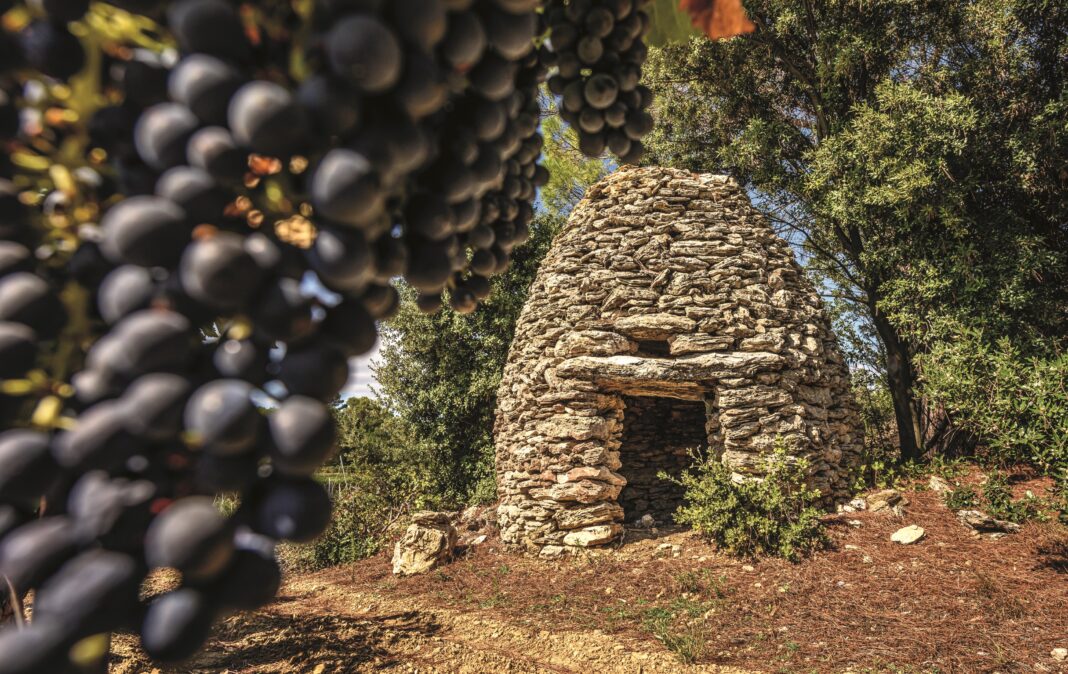From the Gallo-Roman success of the vine to the industrial revolution success, the Languedoc has long enjoyed glorious times. The challenges and economic and cultural transformations of the 20th century have hurt it more than any other region. The renaissance is here, and it is well deserved
SEASON 1 THE DAGGER AND THE CROSS Historians date the introduction of vines to the region by Greek merchants to around the 6th century BC. Numerous Greek amphorae and Etruscan cups attest to this, making it possible to date the area precisely. Recent research even points to a slightly earlier culture. The Romans developed winegrowing after their conquest of Gaul. The warm climate meant that wine production was fairly regular. Viticulture in the large Roman region known as Narbonnaise overshadowed the transalpine landowners. In 92 AD, the emperor Domitian requested that half the vines in Gaul be uprooted. His edict targeted the vines planted on the plains, which were of the lowest quality, to replace them with wheat, which was beginning to be in short supply. In 280 AD, Probus, another emperor, lifted the ban on planting. The prosperity brought by abundant winegrowing lasted until the end of the Pax Romana. The Gallo-Roman people, who had become decadent, were initially absorbed by the Visigoths, who were less barbaric and much more cultured than our school textbooks tell us. For three centuries, the Visigoths ruled the rich and peaceful kingdom of Septimania. The last of the Visigoth kings, who was slain by Clovis in 507, is remembered in the Corbières by the Alaric mountain. There followed a long procession of invaders from the east, north and south, leaving desolation and wasteland in their wake. In one direction, the Arabs drove out the Goths, and in the other, the Franks drove the Saracens out of Languedoc once and for all. Peace returned with the arrival of the Benedictine and Cistercian monks, whose abbeys became the basis for the re-colonisation of the region’s vineyards. The first half of the 13th century was another turbulent period. Agricultural areas and vineyards were devastated by the Cathar tragedy. The crusade against the Albigensians led to the extermination of the “heresy” and put the doctrine of the Roman clergy, the pillar of the monarchy, back at the centre of beliefs. It ended with the region becoming part of the crown of the kings of France. Walkers in the region can still admire the high points of this episode: the castles of Quéribus, Puivert, Puilaurens and Peyrepertuse, and other military strongholds perched on the mountains on the borders of the kingdoms of France and Aragon and taken over by the Cathars to defend themselves. The return of serenity was conducive to vine-growing. Vine-growing on the hillsides was of a high standard for the time. The wine was appreciated and increasingly distributed, thanks in particular to the Canal du Midi, opened in 1683, that linked the Mediterranean to Toulouse. The archives of the time also mention exports of Languedoc wines to England and the Netherlands. A succession of harsh winters destroyed the olive groves and encouraged the spread of vines in a world still largely dominated by mixed farming. Everything changed with the start of the industrial era.
SEASON 2 INDUSTRIAL REVOLUTION
This content is locked
You must be a subscriber to read this content, please subscribe today.
Photos: Leif Carlsson
🔒 Access to the rest of the story is exclusively reserved to subscribed members.


























